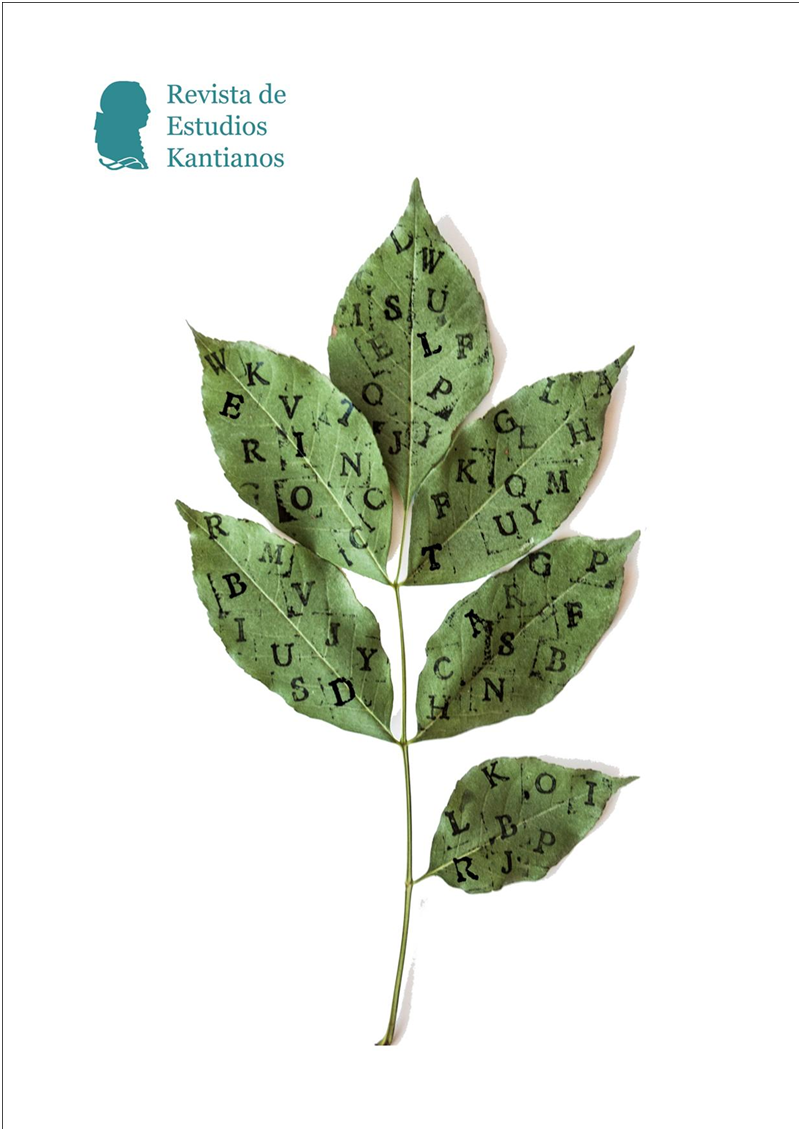On the Intuitive Value of Aesthetic Ideas: Pleasure and Knowledge in the Critique of the Power of Judgment
DOI:
https://doi.org/10.7203/REK.9.1.28151Palabras clave:
Kant, aesthetic judgment, aesthetic idea, genius, intuition Resumen
Resumen
While in the “Analytic of the Beautiful” of the third Critique Kant establishes an unequivocal distinction between aesthetic and cognitive judgments, in the context of the theory of Genius we find new elements that will enable us to discuss such antagonism between both type of judgments. As a matter of fact, Kant defines genius as the one possessing the “vivifying principle in the mind” which—by setting our cognitive faculties in motion—succeeds in exhibiting certain intuitive representations called “aesthetic ideas”. The latter are intuitions of the imagination that give much to think about, but against which no particular thought seems adequate. In this way, after analyzing the four moments of the pure judgment of taste, we will develop the notion of “aesthetic idea” within the framework of the Kantian theory of genius, drawing on the most recent interpretations of the subject. Ultimately, we will attempt to show that—although judgments of taste are not cognitive judgments— the third Critique presents important elements in order to evaluate to what extent aesthetic judgments contribute to cognition.
Si en la “Analítica de lo bello” de la tercera Crítica Kant establece una distinción tajante entre los juicios estéticos y los juicios de conocimiento, en el marco de la teoría del genio encontramos nuevos elementos que nos permitirán discutir tal antagonismo entre ambos tipos de juicio. En efecto, Kant define al genio como a aquel que posee el “principio vivificante del ánimo” que –al movilizar nuestras facultades de conocimiento— exhibe ciertas representaciones de tipo intuitivo denominadas “ideas estéticas”. Estas últimas son intuiciones de la imaginación que dan lugar a mucho pensar, pero para las cuales ningún pensamiento particular resulta adecuado. En este sentido, luego de analizar los cuatro momentos del juicio de gusto puro, intentaremos desarrollar la noción de “idea estética” en el marco de la teoría kantiana, apoyándonos en algunas de las interpretaciones más recientes sobre este tema. En última instancia, intentaremos mostrar que –a pesar de que los juicios de gusto no son juicios de conocimiento– la tercera Crítica presenta elementos importantes para evaluar en qué medida los juicios estéticos pueden contribuir a nuestro conocimiento.
 Descargas
Descargas
 Citas
Citas
Allison, H. (2001). Kant’s Theory of Taste, CUP (pp. 258-284).
Arenas, D. (2001). Revisiting § 9 of the Critique of Pure Judgment: Pleasure, Judgment, Universality. In Kant und die Berliner Aufklärung, Akten des IX. Internationalen Kant-Kongresses. Walter de Gruyter, 2001, Bd. 3, 373-382.
Chignell, A. (2007). Kant on the normativity of taste: The role of aesthetic ideas. Australasian Journal of Philosophy, 85:3, 415-433.
DeBord, C. (2012). Geist and communication in Kant’s Theory of Aesthetic Ideas. Kantian Review, 177-190.
Dias Carvalho, J. (2001). Le Fondement cognitif de la faculté de juger esthétique. In Kant und die Berliner Aufklärung, Akten des IX. Internationalen Kant-Kongresses, Walter de Gruyter, 2001, Bd. 3, 383-390.
Fry, K. A. (2001). Kant and the Problem of Genius. In Kant und die Berliner Aufklärung, Akten des IX. Internationalen Kant-Kongresses, Walter de Gruyter, 2001, Bd. 3, 546-552.
Guyer, P. (2006). The Harmony of the Faculties Revisited. In: R. Kukla, R. (Ed.): Aesthetics and Cognition in Kant’s Critical Philosophy (pp. 162-193). Cambridge.
------------- (1997), Formalism and the Theory of Expression in Kant’s Aesthetics. Kant-Studien, 68, 46-70.
------------ (1993), Kant and the Experience of Freedom: Essays on Aesthetics and Morality (pp. 27-47). CUP.
Halper, A. (2019). Aesthetic Judgment as Parasitic on Cognition, Kant Yearbook, 11:1, 41-59.
Jáuregui, C. (2010). Juicio estético, imaginación y conciencia subjetiva en la Crítica de la facultad de juzgar de Kant. In Jáuregui, C. (Ed.): Entre pensar y sentir (pp. 241-258). Colihue.
Kant, I. (1900). Gesammelte Schriften, Walter de Gruyter.
Kant, I. (2002). Critique of the Power of Judgment. Trans. Paul Guyer, Cambridge University Press.
Kant, I. (2010), Critique of Pure Reason. Trans. Paul Guyer, Cambridge University Press.
Kuplen, M. (2019). Cognitive interpretation of Kant’s Theory of Aesthetic Ideas, Estetika: The Central European Journal of Aesthetics, LVI/XII, n°1, 48-64.
---------------- (2021), Reflective and Non-reflective Aesthetic Ideas in Kant’s Theory of Art, The British Journal of Aesthetics, vol. 61, 2-16.
Lebrun, G. (1970). Kant et la fin de la métaphysique, Librairie Armand Colin.
McMahon, J. A., (2017), Immediate Judgment and Non-Cognitive Ideas: The Pervasive and Persistent in the Misreading of Kant’s Aesthetic Formalism, The Palgrave Kant Handbook, 425-446.
Matherne, S. (2013). The Inclusive Interpretation of Kant’s Aesthetic Ideas. British Journal of Aesthetics, 53 (I), 21-39.
Oroño, M. (2022). La función cognitiva de las ideas estéticas en Kant, Revista de Estudios Kantianos, 7.1, 43-74.
-------------- (2017), “El (no)-conceptualismo de Kant y los juicios de gusto”, Con-textos Kantianos, nro. 6, 93-105.
Descargas
Publicado
Cómo citar
-
Resumen114
-
PDF 36
Número
Sección
Licencia
![]()
Los autores que publican en esta revista están de acuerdo con los siguientes términos:
- Los autores conservan los derechos de autor y garantizan a la revista el derecho de ser la primera publicación del trabajo al igual que licenciado bajo una Creative Commons Attribution License que permite a otros compartir el trabajo con un reconocimiento de la autoría del trabajo y la publicación inicial en esta revista.
- Los autores pueden establecer por separado acuerdos adicionales para la distribución no exclusiva de la versión de la obra publicada en la revista (por ejemplo, situarlo en un repositorio institucional o publicarlo en un libro), con un reconocimiento de su publicación inicial en esta revista.
- Se permite y se anima a los autores a difundir sus trabajos electrónicamente (por ejemplo, en repositorios institucionales o en su propio sitio web) antes y durante el proceso de envío, ya que puede dar lugar a intercambios productivos, así como a una citación más temprana y mayor de los trabajos publicados (Véase The Effect of Open Access) (en inglés).








